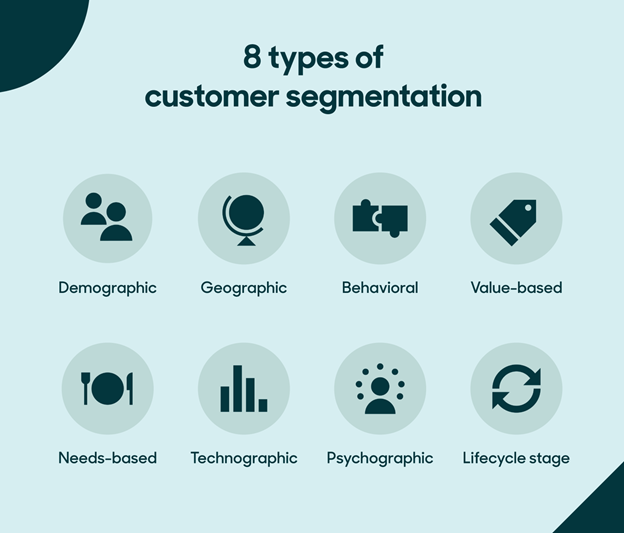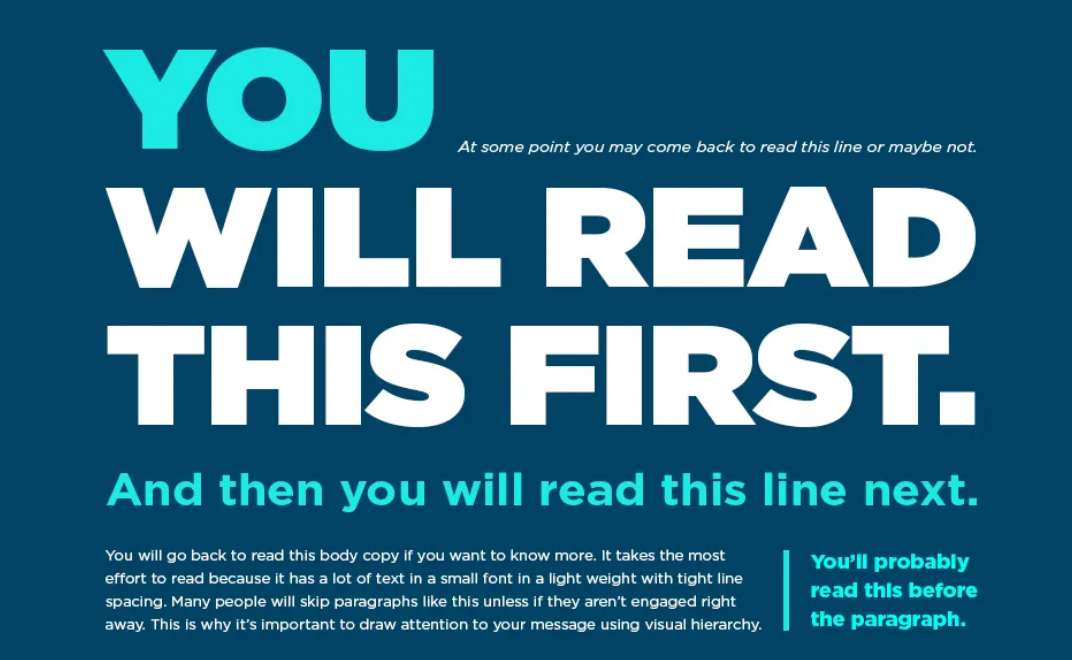Few design strategies can help you reach your business goals as effectively as well-thought-out UX design.
Research from Forrester suggests that every dollar invested in UX can generate a return of up to $100. And the profitability of creating exceptional user experiences doesn’t end there. The right techniques can elevate customer satisfaction, boost conversions, contribute to SEO, improve brand reputation, and inspire your target audience to continue engaging with your business even after they’ve solved their initial pain points.
But the thing is, generalized UX tactics – regardless of how effective they are – don’t work for all businesses. Instead, if you operate in a niche market, you might have to adapt your approach to better align with your prospects’ needs.
So, if you’re interested in UX for niche markets, here’s how to design user experiences for specialized industries. Let’s get into it.
Consider Unique Customer Needs During the Design Process
When looking to create an enjoyable UX in specialized industries, the most important thing you have to do is identify what your target audience seeks. Then, do your best to employ web design to make that happen.
Ultimately, people rate their brand experiences based on how they align with their expectations.
According to research, 73% of consumers expect companies to understand their unique needs and expectations. And 56% expect all offers to be personalized, showing just how essential it is for your content to speak to your ideal customers.
With this in mind, one of the most effective ways to create user experiences for specialized industries is to recognize the actions your web visitors need to complete while attempting to resolve their pain points.
For example, consider the ordering process for a custom-built HDPE cabinet. EXT Cabinets is a brand that sells these types of products for outdoor kitchens. And it understands that its customers want versatile design options while building their dream setup. That’s why EXT employs UX design to ensure a high level of customization during the ordering process, allowing shoppers to choose every element of their cabinetry, from style and color to hardware, door setups, and fuel type for the built-in grill.
Source: extcabinets.com
Alternatively, think about selling consumable products – especially ones like supplements or office supplies. Because these get used up and discarded, customers often need to consider the repurchase process when converting. So, why not anticipate that need and employ UX design to remove a common pain point in your niche industry?
Check out, for instance, how Transparent Labs does it on their Premium Superba Krill Oil Supplement page. Knowing that customers are most likely to need a refill, this brand automatically includes a Subscribe UI element in its page design. Furthermore, it gives shoppers control over how often they get their refills. This fosters an enjoyable brand experience that circumvents frustration (the need to reorder every 30 days) before it even comes up.
Source: transparentlabs.com
Develop Mechanisms to Elevate Accessibility
One of the biggest challenges of operating in niche markets and selling specialized solutions is that there’s often a lack of product understanding among non-expert buyers. This can be a real conversion-killer, especially considering that 54% of consumers abandon their shopping journeys due to choice overload.
You could overcome this challenge with a strategic content marketing approach. Nevertheless, you could also employ UX design to guide your audience through the sales funnel.
By developing product discovery mechanisms that elevate accessibility, you can effectively attract potential customers into your sales funnel and guide them through the niche shopping process without allowing them to become overwhelmed.
The best thing about this UX strategy is that it’s relatively easy to implement. The simplest way to do it on your niche website is to create a product discovery quiz.
For example, Loop incorporates a Help Me Choose section on its website. Here, the brand asks shoppers to pick their primary use case. Then, it provides them with relevant product recommendations that align with those choices.
Source: loopearplugs.com
Make Self-Service Resources Easily Accessible
These days, consumers are increasingly self-reliant when shopping. And while they still appreciate high-quality and efficient customer service and sales team interactions, they’re more than willing to navigate the buyer’s journey alone.
According to data from the Harvard Business Review, 81% of consumers will attempt to resolve their pain points alone before reaching out to a customer service representative.
If you operate in a niche market, it’s almost guaranteed that your prospects are likely to have questions. So, why not make it super easy for them to access any necessary educational materials and find answers to their questions?
This can be exceptionally easy. If you don’t want to invest in complex web design upgrades and prefer to deliver a streamlined user experience, you could do something similar to Business for Sale.
Knowing that its target audience tends to have several key questions about selling a business, this brand incorporates an in-depth FAQ section on its “How to Sell a Business” page, where it explains the entire process from start to finish.
Source: businessforsale.com.au
Or, if you want to add a dose of interactivity and personalization to the product understanding process, you could consider adding an AI-powered live chat feature to your website. It’s what Ruffwear does on its website, with a chat button that allows customers to search for info without visiting the brand’s dedicated FAQ page.
Source: ruffwear.com
Showcase Meaningful and In-Depth Social Proof
Social proof is a huge part of the typical buyer’s journey and customer experience.
After all, practically all consumers seek out social proof before making a buying decision. It’s only natural that your web visitors will want to interact with some consumer feedback before committing to a purchase.
The problem with operating in niche markets is that traditional customer testimonials or ratings won’t contain the breadth of detail required to convince your prospects to convert. Fortunately, you can overcome this challenge by being more mindful of what social proof formats you employ in your web design.
A good rule of thumb is prioritizing detail-oriented, meaningful testimonials when designing UX in specialized industries.
For example, check out how Eden Emerald Buyers Agent does it. The brand understands that real estate shoppers have highly specific requirements when choosing service providers. More importantly, it knows that customer satisfaction depends on multiple factors. So, to guarantee that its website conveys the quality of its services, EE Buyers Agent chose to showcase in-depth social proof that addresses several distinguishing aspects of the CX this brand offers. This contributes to a more informative browsing experience, a higher chance of site content resonating with the brand’s audience, and an elevated purchase intent among qualified leads.
Source: eebuyersagent.com.au
Want to take things to the next level and increase your chances of engaging web visitors? Experiment with more advanced social proof formats.
Video testimonials are always a good choice. However, one of the best options for niche businesses – particularly B2B brands – is to showcase in-depth case studies like the ones on the Tidio homepage. Because they combine real-world data with customer feedback, these resources present the ideal format for elevating UX in specific industries.
On the one hand, they allow the audience to objectively evaluate the appropriateness of Tidio’s solutions for removing their pain points. On the other hand, they help position the brand’s product as the solution for unique pain points, which is the number one goal when designing user experiences in niche industries.
Source: tidio.com
Don’t Bury Your Value Propositions in Complex Design Details
Want to design a satisfactory user experience for your website? Keep in mind that simplicity is often the key to great UX.
True, minimalism and ample white space aren’t essential for all brands. After all, well-understood product categories people can shop for without expertise often do well when presented in maximalist settings. However, when targeting niche markets, keep in mind that your audience won’t benefit from visual clutter.
Instead, make it your goal to make information easy to find and interact with, as this will ensure that web visitors genuinely comprehend your value propositions.
For inspiration, check out how CapitalPad does it on its independent sponsors resource page. Instead of listing excessive amounts of info (which could be justified considering the type of service this brand sells), CapitalPad opts for simplicity. It employs niche keywords its ideal customers understand. It describes customer benefits in a short and straightforward manner. Plus, it does its best to shorten the sales cycle with well-positioned CTAs that encourage sign-ups at the right moments of the browsing journey.
Source: capitalpad.com
Final Thoughts
Designing an enjoyable website user experience in niche markets is key to engaging visitors and compelling them to continue interacting with your brand. It’s also the secret to establishing your organization’s credibility and expertise in specialized industries, where skill and experience often make or break deals.
The great thing about the UX tips outlined in this guide is that they’re easy to implement into your existing website design and highly adaptable.
So, don’t follow the advice blindly. Instead, prioritize aligning your UX design with your target audience’s unique needs. Test performance to identify opportunities for improvement. And don’t be afraid of going against the grain (especially when it comes to generalized UX advice). After all, as a niche business, you need to have a strong understanding of your industry’s specific requirements. And if those differ from most industry sectors, then that shouldn’t stop you from designing user experiences that fit your ideal customer’s needs to a tee.
- The UX of Trust: Why Design Can Make or Break Brand Credibility - November 24, 2025
- 6 Ways User Experience Shapes Customer Decisions Across Industries - October 13, 2025
- UX for Niche Markets: How to Design User Experiences for Specialized Industries - July 29, 2025
![]() Give feedback about this article
Give feedback about this article
Were sorry to hear about that, give us a chance to improve.
Error: Contact form not found.




